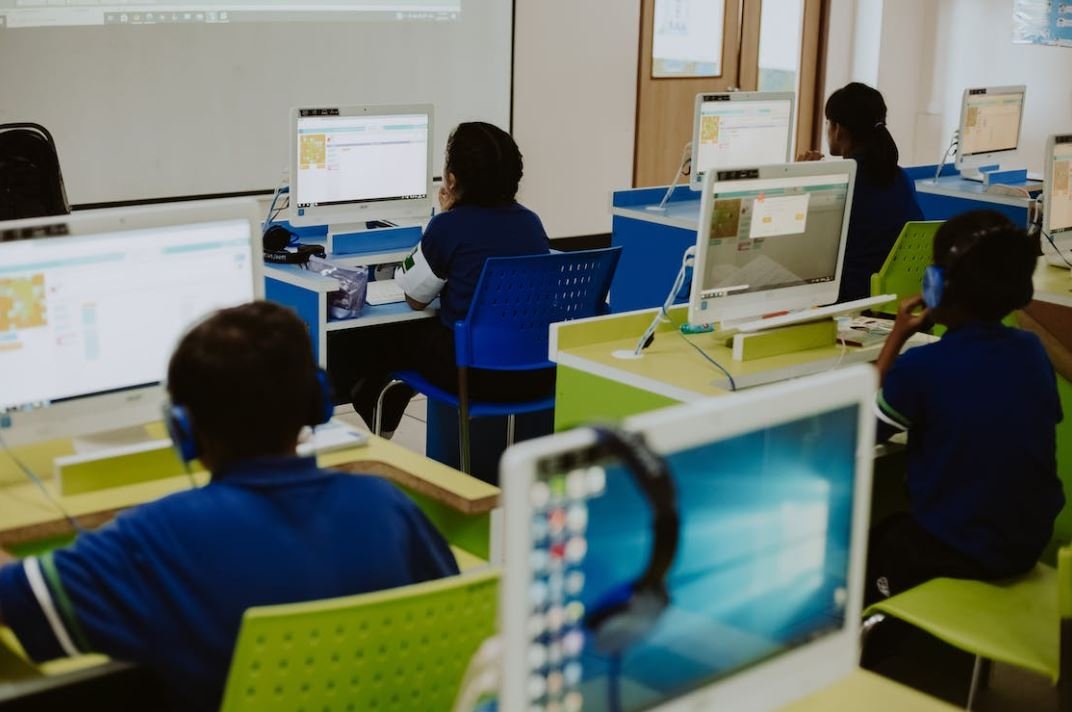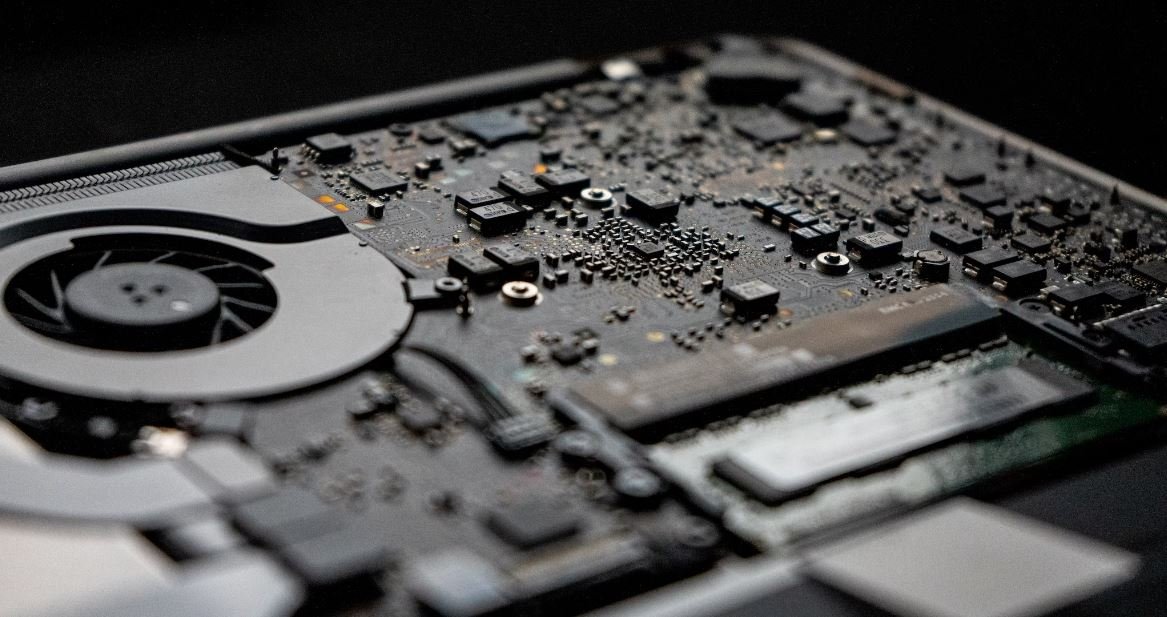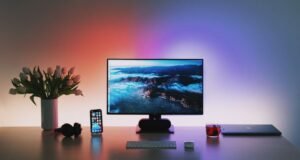Generative Art: Where to Start
Generative art is a form of creative expression where artists use algorithms and computer programs to generate visual or audio-visual artworks. It is a medium that combines art and technology, allowing artists to create unique and dynamic pieces. If you are interested in exploring generative art, here are some key points to consider:
Key Takeaways
- Generative art is a form of art created using algorithms and computer programs.
- It allows for the creation of unique and dynamic pieces that evolve over time.
- Generative art combines art and technology, requiring both artistic and programming skills.
- There are various tools and programming languages available for creating generative art, such as Processing, p5.js, and Max MSP.
- Learning generative art can be a rewarding and creative journey, allowing artists to explore the intersection of art and technology.
To start creating generative art, it’s essential to have a basic understanding of programming and a willingness to experiment and explore. *Generative art offers endless possibilities for creativity and innovation*, enabling artists to generate complex and ever-changing artworks. Whether you are an experienced programmer or a beginner, there are resources and communities available to help you get started.
Choosing the Right Tools
When diving into generative art, choosing the right tools and programming language can make a significant difference in your creative process. Some popular tools and languages used for generative art include:
- Processing: A visual coding platform that allows artists to create interactive graphics and animations.
- p5.js: A JavaScript library that makes it easy to create interactive graphics and animations in the browser.
- Max MSP: A visual programming language for creating real-time audio and visual processing applications.
Each tool has its strengths and learning curve, so it’s essential to consider your artistic goals and preferences when choosing the right tool for you. *Exploring different tools can lead to new artistic possibilities and styles*.
Learning Resources
Embarking on a journey in generative art requires learning the fundamentals and gaining knowledge about programming concepts and algorithms. Fortunately, there are various resources available to help you get started:
- Online tutorials and documentation provided by the tool’s official websites.
- Communities and forums where artists share their creations and offer support and feedback.
- Books and publications on generative art and computational creativity.
- Online courses and workshops taught by experienced generative artists.
Engaging with these resources can help you understand the underlying concepts and techniques involved in generative art. *Learning from others’ experiences and creations can inspire your own artistic journey*.
Examples of Notable Generative Artworks
| Artwork | Artist | Year |
|---|---|---|
| Pioneer | Casey Reas | 2003 |
| Autopoiesis | Refik Anadol | 2013 |
Generative art has gained recognition globally, with notable artists pushing the boundaries of what’s possible. *These artworks inspire and showcase the potential of generative art in various domains*.
Getting Started with Generative Art
Now that you have an understanding of what generative art is and some of the tools and resources available, it’s time to dive in and start creating your own generative artworks. Remember to:
- Start with simple projects and build upon them as you gain more experience.
- Experiment with different algorithms and parameters to create unique variations.
- Engage with the generative art community to share your work, learn from others, and receive feedback.
Generative art offers a realm of creative possibilities, where artists can blend their artistic vision with technology. *Embrace the journey and enjoy the process of creating captivating generative artworks*.

Common Misconceptions
Generative Art is Only for Artists
One major misconception about generative art is that it is only created by and for professional artists. In reality, anyone with an interest in creativity and technology can try their hand at generative art.
- Generative art can be created by anyone regardless of artistic skills
- Basic coding knowledge helps but is not always necessary
- Generative art can involve experimenting with various digital tools and software
Generative Art is Completely Random
Another misconception is that generative art is completely random and lacks intention or control. While randomness can be a part of the process, generative art often involves intricately designed algorithms and carefully defined parameters.
- Generative art can be planned and designed with certain goals in mind
- Artists have control over the parameters and rules that guide the generative process
- Randomness can be used strategically to introduce variation and unpredictability
Generative Art is Limited to Computer Programming
Many people assume that generative art can only be created through computer programming. While coding is a common approach, it is not the only way to create generative art.
- Other mediums, such as physical materials and traditional art tools, can be used to create generative art
- Collaboration between artists from different disciplines can result in unique generative art pieces
- Generative art can also involve mixing digital and analogue techniques
Generative Art is Not Suitable for Traditional Art Galleries
Some people believe that generative art does not belong in traditional art galleries because it is too digital or tech-oriented. However, many galleries and museums have embraced generative art as a new form of expression.
- Generative art can be exhibited in traditional art galleries alongside other forms of art
- Galleries often showcase generative art installations that engage and interact with visitors
- The inclusion of generative art in galleries helps bridge the gap between art and technology
Generative Art is a Recent Phenomenon
While generative art has gained more recognition in recent years, it is not a new phenomenon. Artists have been exploring generative processes and techniques for decades.
- Generative art has roots in early computer-based art movements, such as algorithmic art and cybernetic art
- Artists like Harold Cohen and Manfred Mohr have been creating generative art since the 1960s
- The advent of digital technologies has brought generative art to a wider audience

Generative Art: Where to Start
Generative art is a fascinating field that combines computer coding with artistic expression. By using algorithms and mathematical formulas, artists can create unique and complex visuals that evolve and change over time. With the growing popularity of generative art, many people are eager to learn how to get started. In this article, we will explore ten essential points that will help you kickstart your journey into the mesmerizing world of generative art.
Pointillism with a Modern Twist
Inspired by Pointillism, a painting technique popularized by Georges Seurat, generative artists have brought this technique into the digital realm. By using a series of points or pixels, these artists create stunning images that emerge when looked at from a distance. The table below showcases some remarkable examples of generative art that uses the Pointillism technique.
| Artist | Artwork | Description |
|---|---|---|
| Jacob Fisher |  |
A mesmerizing landscape created with thousands of individual dots, capturing the intricate details of a serene forest. |
| Emma Patel |  |
An abstract composition of vibrant dots that come together to create a dynamic explosion of colors. |
| Alexander Wu |  |
A playful depiction of a city skyline, using carefully placed dots to depict the bustling movement and energy of urban life. |
Visualizing Flock Behavior
One of the captivating aspects of generative art is its ability to simulate complex behaviors found in nature. By using mathematical models and algorithms, artists can create mesmerizing visualizations that mimic the collective motion of animal flocks or schooling fish. The table below showcases some breathtaking examples of generative art that visualizes flock behavior.
| Artist | Artwork | Description |
|---|---|---|
| Oliver Ramirez |  |
A captivating representation of a flock of birds soaring gracefully through the sky, evoking a sense of freedom and unity. |
| Lily Wong |  |
An mesmerizing visualization of fish swimming in synchrony, creating intricate patterns that are both mystifying and beautiful. |
| Max Zhang |  |
A hypnotic depiction of fireflies dancing in the night sky, forming magical trails of light that captivate the imagination. |
Surreal Landscapes from Code
Generative artists often create surreal landscapes that transport viewers to imaginary worlds filled with wonder and awe. By utilizing algorithms and computational techniques, these artists can generate magnificent landscapes that blend reality and fantasy seamlessly. The table below presents a selection of generative art that immerses us in surreal landscapes.
| Artist | Artwork | Description |
|---|---|---|
| Natalie Chen |  |
A dreamlike scene of floating islands, where mountains and trees hover in the air, challenging our perception of reality. |
| Benjamin Thompson |  |
An otherworldly depiction of a valley adorned with glowing mushrooms, creating an enchanting atmosphere. |
| Sophia Lee |  |
A mysterious landscape emerging from a sea of mist, revealing distant mountains adorned with cascading waterfalls. |
Abstract Expressions in Motion
Generative art also explores the world of abstract expressions, translating emotions and concepts into dynamic and ever-changing visual forms. Artists in this realm create artworks that are not static but rather evolve over time, captivating viewers with their fluidity and mesmerizing patterns. The table below presents a collection of generative art showcasing abstract expressions in motion.
| Artist | Artwork | Description |
|---|---|---|
| Daniel Kim |  |
A dynamic visual composition that unfolds and evolves, representing the artist’s exploration of the chaos and order within the universe. |
| Samantha Reed |  |
An ethereal artwork where shapes and colors continuously transform, inviting us to dive into a realm of infinite possibilities. |
| Michael Yang |  |
A mesmerizing representation of pulsating rhythms and harmonies, imbuing us with a sense of tranquility and introspection. |
Evolutionary Art: Unleashing Nature’s Creativity
Inspired by the principles of evolution, generative artists have developed algorithms that simulate natural selection to generate visually stunning and highly intricate artworks. By allowing these algorithms to evolve and adapt, artists can witness the emergence of beautiful forms and patterns. The table below presents a selection of generative art that harnesses the power of evolutionary algorithms.
| Artist | Artwork | Description |
|---|---|---|
| Jonathan Chen |  |
A mesmerizing creation that resembles a vibrant coral reef, unfolding through generations of evolutionary iterations. |
| Ava Campbell |  |
An intricate artwork mirroring the delicate patterns found in butterfly wings, showcasing the elegance of nature’s design. |
| Ryan Liu |  |
A stunning representation of an evolving forest ecosystem, where trees grow and adapt based on an algorithmic selection process. |
Exploring Fractals: Infinitely Complex Patterns
Fractals are intricate mathematical patterns that exhibit self-similarity at different scales. Generative artists have embraced the beauty of fractals and incorporated them into their artwork. These mesmerizing visuals captivate our imagination as we venture deeper into their infinitely complex structures. The table below presents a collection of generative art that delves into the mesmerizing world of fractals.
| Artist | Artwork | Description |
|---|---|---|
| Anna Wang |  |
A visually stunning representation of the Mandelbrot set, revealing the infinite complexity and intricate details of fractal geometry. |
| Gabriel Lopez |  |
An abstract artwork that explores the Julia set, unfolding a mesmerizing world filled with intricate patterns and delicate curves. |
| Emily Baker |  |
A captivating representation of the Sierpinski triangle, where smaller triangles unfold endlessly, creating a hypnotic visual experience. |
Generative Portraits: Constructing Faces from Code
Generative art offers unique opportunities to delve into portrait creation by leveraging the power of algorithms. Artists can create stunning and unconventional portraits that go beyond traditional representations, challenging our perceptions of human faces. The table below showcases generative art that constructs captivating portraits purely from code.
| Artist | Artwork | Description |
|---|---|---|
| Leo Martinez |  |
A striking generative portrait composed of intricate lines that gracefully follow facial contours, presenting a unique perspective on human beauty. |
| Isabella Johnson |  |
An unconventional generative portrait that deconstructs facial features into a mosaic of geometric shapes, challenging conventional representations. |
| Lucas Thompson |  |
A captivating generative portrait that utilizes algorithmic patterns to create a pixelated and abstract representation of human emotion. |
Abstract Typography: Reinventing the Alphabet
Typography plays a significant role in generative art, allowing artists to explore innovative and abstract representations of letters and words. By deconstructing and reimagining traditional typefaces, artists create visually striking compositions that challenge our understanding of written language. The table below presents generative art that reinvents the alphabet through abstract typography.
| Artist | Artwork | Description |
|---|---|---|
| Sophie Wilson |  |
An intricate generative artwork that transforms each letter of the alphabet into a unique composition of lines and curves, intertwining tradition with innovation. |
| James Baker |  |
A visually striking representation of abstract typographic forms that challenges traditional legibility, merging art and communication in a fresh and exciting way. |
| Emma Hill |  |
An innovative exploration of generative typography, where letters are transformed into visually dynamic and expressive compositions that captivate the eye. |
Interactive Generative Art: Engage and Create
The evolution of generative art has led to the emergence of interactive experiences that allow viewers to engage directly with the artwork and influence its creation. These interactive installations give individuals the opportunity to become co-creators, actively shaping the artwork through their participation. The table below presents interactive generative art that blurs the boundaries between viewer and artist.
| Artist | Artwork | Description |
|---|---|---|
| Noah Turner |  |
An immersive installation where viewers’ movements are tracked and transformed into vivid abstract visuals, offering a unique and interactive art experience. |
| Aria Lee |  |
A collaborative generative art project that allows participants to contribute to an evolving artwork by creating and modifying visual elements in real-time. |
| Oliver Young |  |
A mesmerizing interactive installation where sound inputs generate intricate patterns and shapes, transforming auditory experiences into visual delight. |
Combining Traditional and Generative Techniques
Generative art doesn’t always exist in opposition to traditional artistic techniques; oftentimes, it can complement and enhance traditional methods. Artists merge generative algorithms with classical mediums, opening up new possibilities and pushing the boundaries of artistic creation. The table below showcases the fusion of traditional art techniques with generative algorithms, creating visually captivating artworks.
| Artist | Artwork | Description |
|---|---|---|
| Matthew Wilson |  |
A stunning mixed-media artwork combining traditional painting techniques with generative elements, resulting in a harmonious composition that merges past and future. |
| Emily Rodriguez |  |
An intricately sculpted piece where generative patterns are etched into traditional clay, combining ancient pottery techniques with contemporary generative art. |
| Nathan Turner |  |
A breathtaking photograph enhanced with generative software, transforming a captured moment into a captivating visual narrative that transcends traditional photography. |
Generative art is a limitless creative territory that seamlessly blends technology, mathematics, and artistic vision. Whether you are drawn to surreal landscapes, abstract expressions, or interactive experiences, there is a starting point for everyone in the world of generative art. Embrace the infinite possibilities, explore different techniques, and let your imagination guide you as you embark on your own generative art journey.




